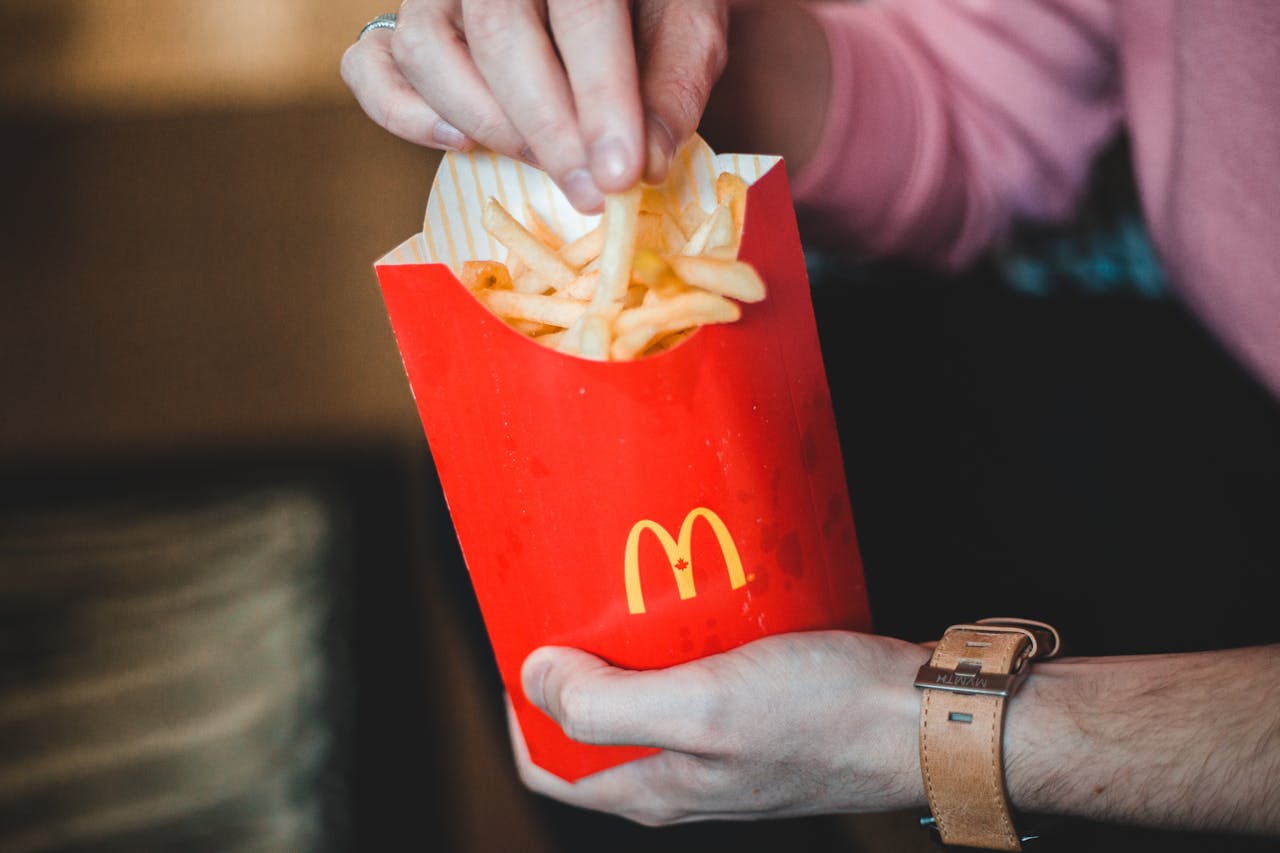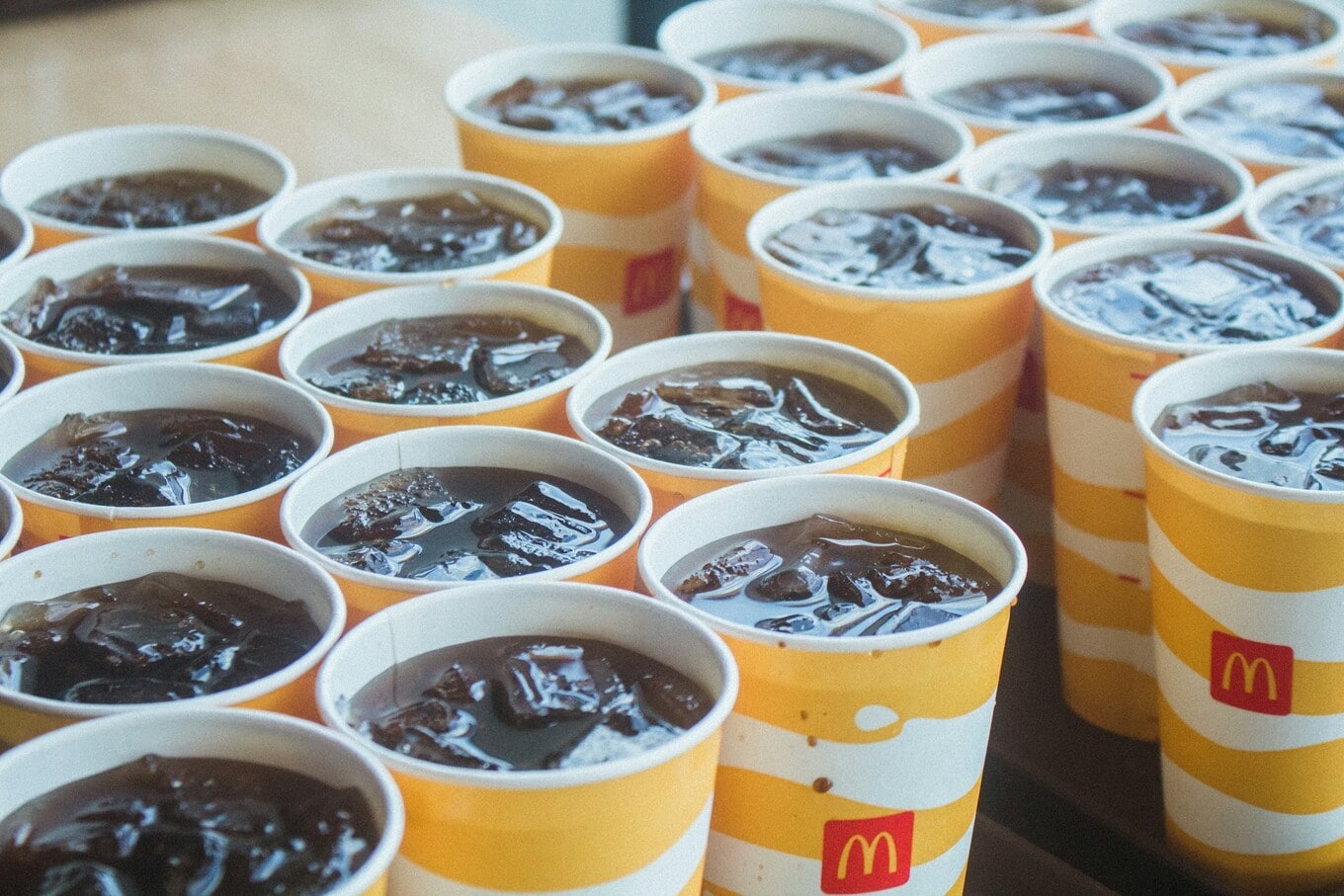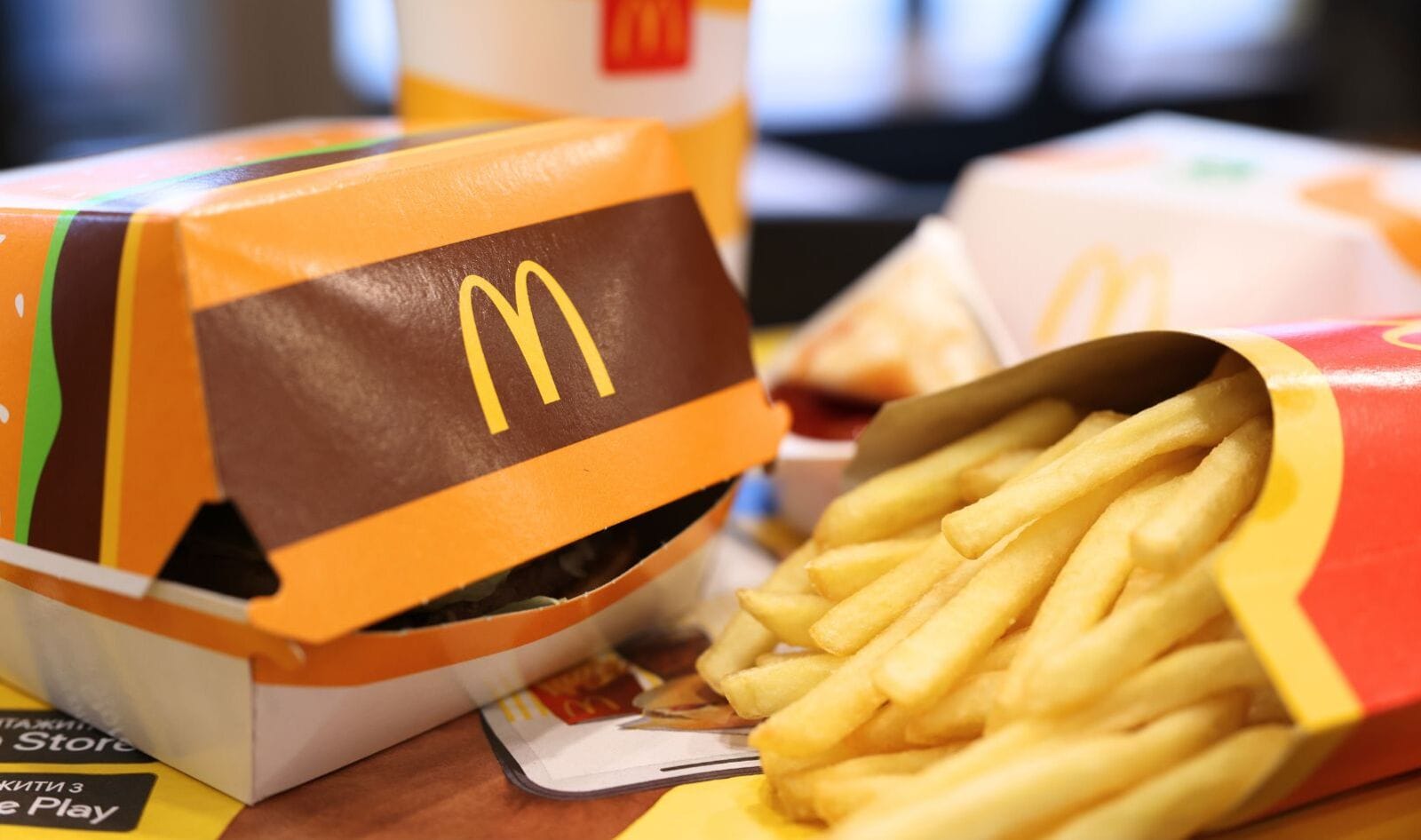The latest health trend making waves on TikTok doesn’t come from a supplement aisle or wellness influencer’s fridge. It’s a drive-thru order. Dubbed the “McMigraine,” this so-called hack consists of just two items from McDonald’s: a large fries and a large Coca-Cola. And according to millions of TikTok views, that combo might be the quick fix for splitting headaches.
But behind the salt, sugar, and viral videos lies a concerning narrative. Registered dietitians and medical doctors are warning that this highly processed “cure” is neither clinically supported nor nutritionally sound. And while the caffeine and carbs may offer a fleeting sense of relief, experts say the long-term effects of this kind of food-based self-medication could do more harm than good.

How the McMigraine hack went viral
The McMigraine isn’t some secret menu item—just a pairing of two of McDonald’s most popular offerings. One order of large fries clocks in at 777 milligrams of sodium and 9.5 grams of saturated fat. Add a large fountain Coke, and you’re looking at 100 grams of added sugar in a single sitting. That’s double the daily limit of added sugar recommended by the Dietary Guidelines for Americans, which caps it at 50 grams. And you’ve already hit about one-third of the advised daily sodium max (2,300 milligrams) and nearly half the suggested saturated fat intake (20 grams).
The supposed logic? The combination of sodium, sugar, caffeine, and simple carbohydrates might offer fast-acting symptom relief. While some migraine sufferers say they’ve found relief from some of these components, Matthew Robbins, MD, a neurologist at Weill Cornell Medicine and New York-Presbyterian, told Today that long-term reliance on fast food can lead to inflammation and other increased health risks, causing more harm than good over time. “We know migraine is associated with worse cardiovascular health,” Robbins said. “And, obviously, having a fatty meal and a big caffeinated soda is not really good for you in general.”
 Pexels
Pexels
So why does it feel like it works for some people? That temporary rush of dopamine from sugar and salt, combined with the blood-vessel-constricting effects of caffeine, can mimic relief. But it’s not targeting the root cause—and it could worsen symptoms over time for people with chronic migraines.
A better approach to migraine relief
A more holistic—and evidence-based—way to approach migraine management starts with understanding common triggers. According to the National Institute of Neurological Disorders and Stroke, migraines can be caused by hormonal fluctuations, changes in sleep patterns, dehydration, environmental stimuli like light or noise, and dietary choices.
Experts recommend reaching for hydrating, nutrient-rich options instead. You can mirror the caffeine, sugar, salt, and carbs found in the McMigraine hack with other foods and beverages that have better nutritional profiles, like a sports drink, which provides hydration, sugar, salt, carbs, and sometimes magnesium.

Magnesium, in particular, has shown promise in migraine prevention. A recent meta-analysis published in Pain Physician found that magnesium supplementation may reduce the frequency of migraine attacks, especially in people who are deficient. Leafy greens like spinach, legumes such as black beans and lentils, and nuts like almonds and cashews are all excellent plant-based sources of magnesium.
Caffeine, too, can be helpful—in moderation. A cup of black coffee or unsweetened matcha can offer the same vessel-constricting benefits without the 100 grams of sugar in a fast-food soda. And for those avoiding caffeine altogether, herbal options like ginger tea have also shown promise. A randomized clinical trial published in Phytotherapy Research found that ginger powder was nearly as effective as sumatriptan, a common migraine drug, in reducing symptoms.
BECOME A VEGNEWS VIP: Get exclusive product deals, freebies, and perks galore!
Hydration is another often overlooked factor. Even mild dehydration can lead to headaches. Instead of relying on sugary soda, reach for electrolyte-enhanced water or natural options like coconut water. Both can restore fluid balance without spiking blood sugar or sodium levels.
Plant-based foods that may help
A whole-foods, plant-based diet may do more than prevent migraines—it could also lower inflammation and reduce the risk of other chronic conditions. A study published in BMJ Nutrition, Prevention & Health found that a low-fat vegan diet rich in whole grains, fruits, vegetables, and legumes was associated with reduced migraine frequency and intensity. Participants reported fewer and less severe migraines after following the diet for 12 weeks.
Some migraine-friendly plant-based foods to consider:
-
Sweet potatoes: A great source of complex carbs and vitamin B6, which plays a role in brain function and hormone regulation
-
Bananas: Rich in magnesium and potassium, both of which help regulate blood pressure and nerve function
-
Chia seeds: Packed with omega-3s, which may reduce inflammation linked to migraines.
-
Quinoa and buckwheat: Gluten can be a trigger for some, so switching to naturally gluten-free grains may help
Experts recommend talking with your primary care physician or neurologist about customized treatment strategies for migraines, and not experimenting with unfounded treatments. Robbins says use caution with so-called miracle cures, especially when they’re floating around TikTok, because “it’s never just a one-size-fits-all approach.”
For more plant-based stories like this, read:
JUMP TO ... Latest News | Recipes | Guides | Health | Subscribe








